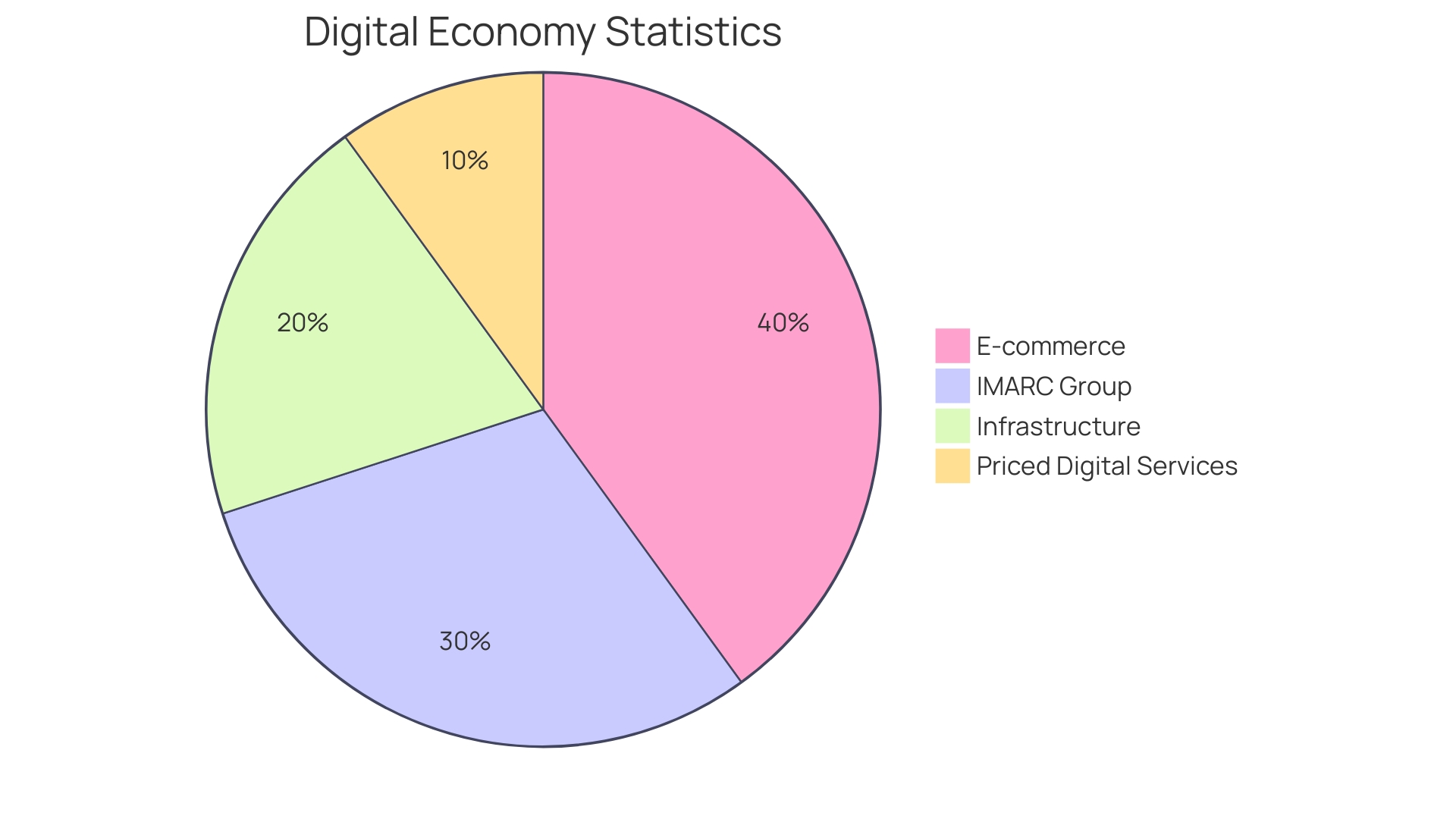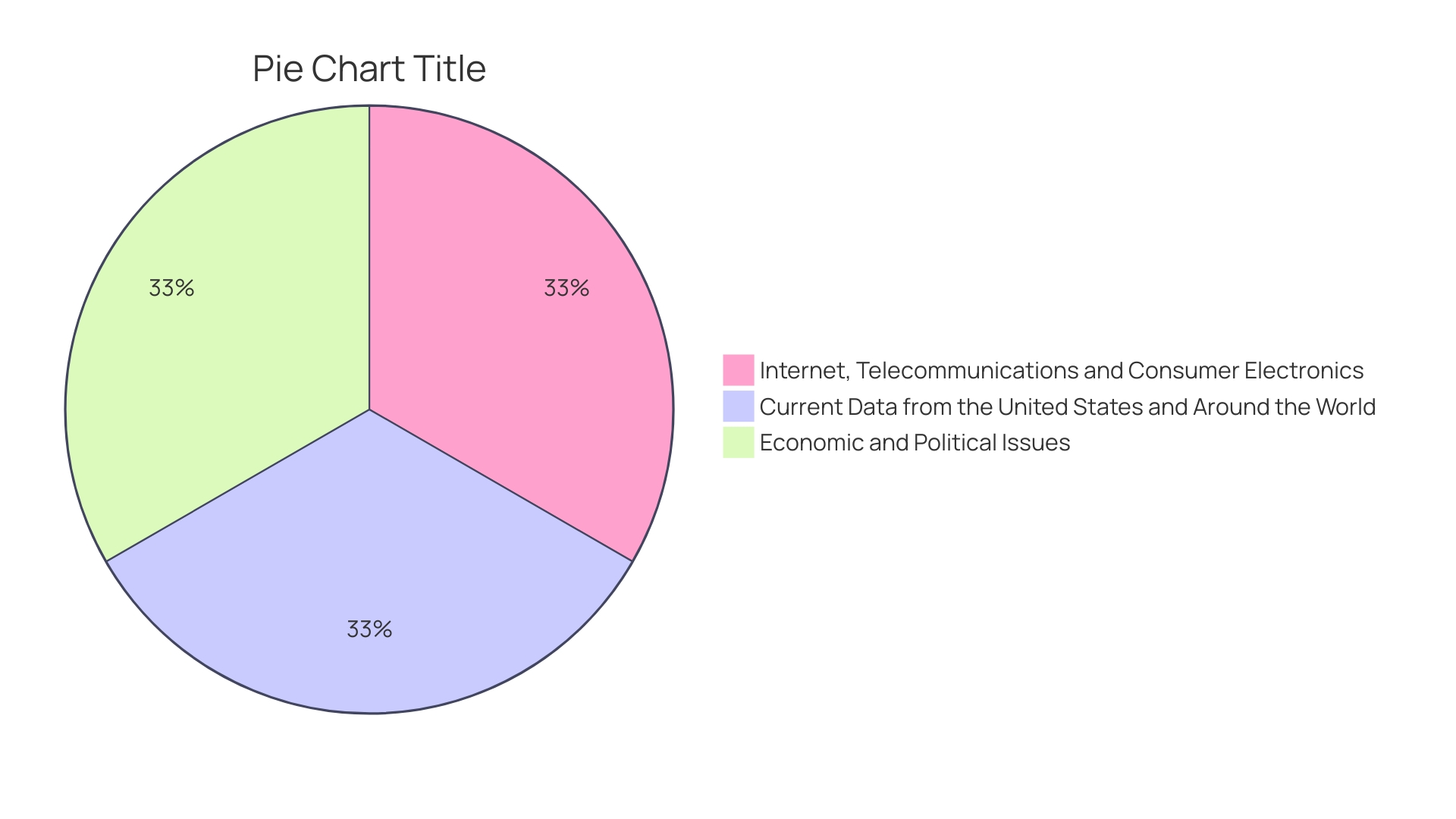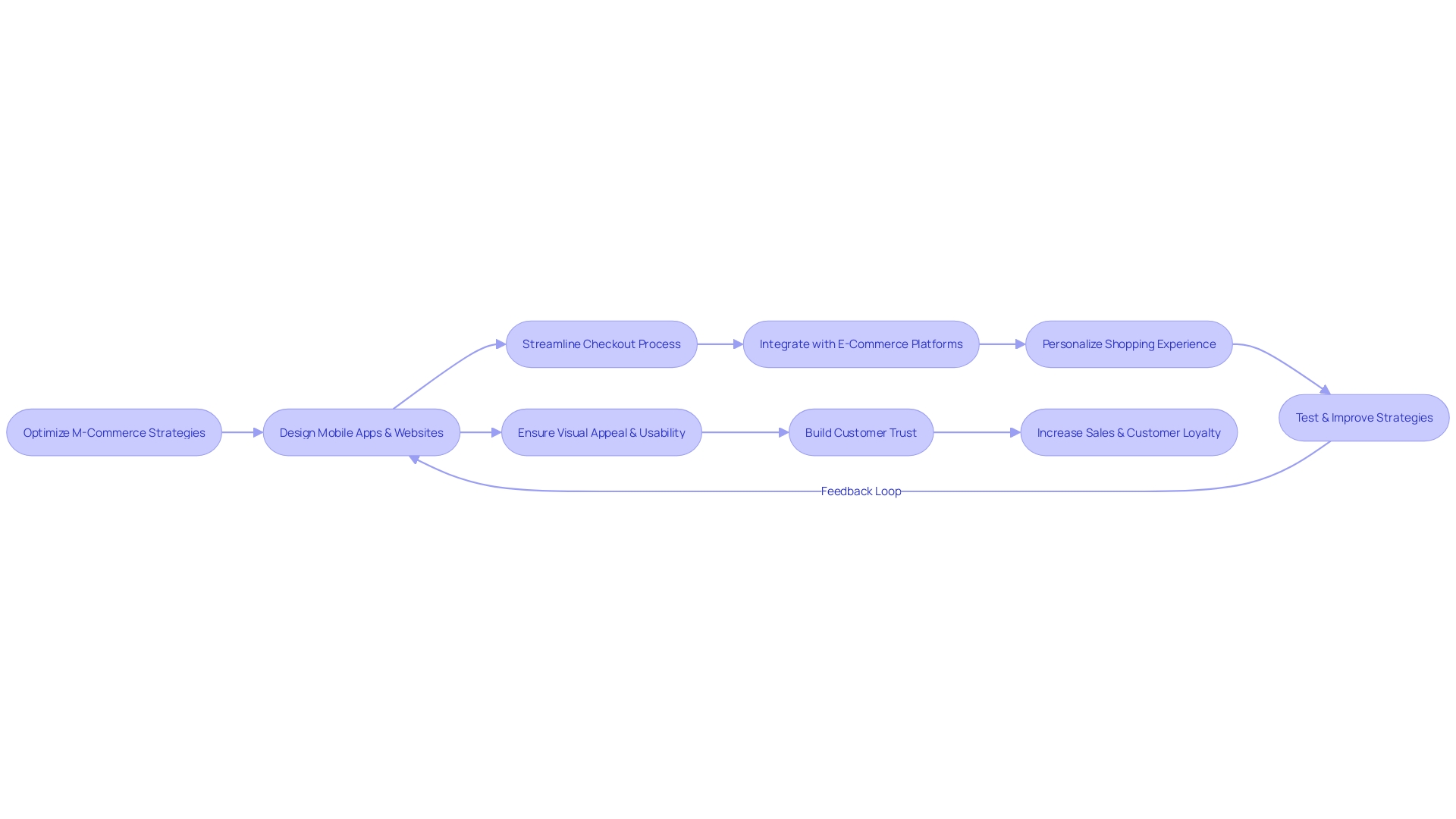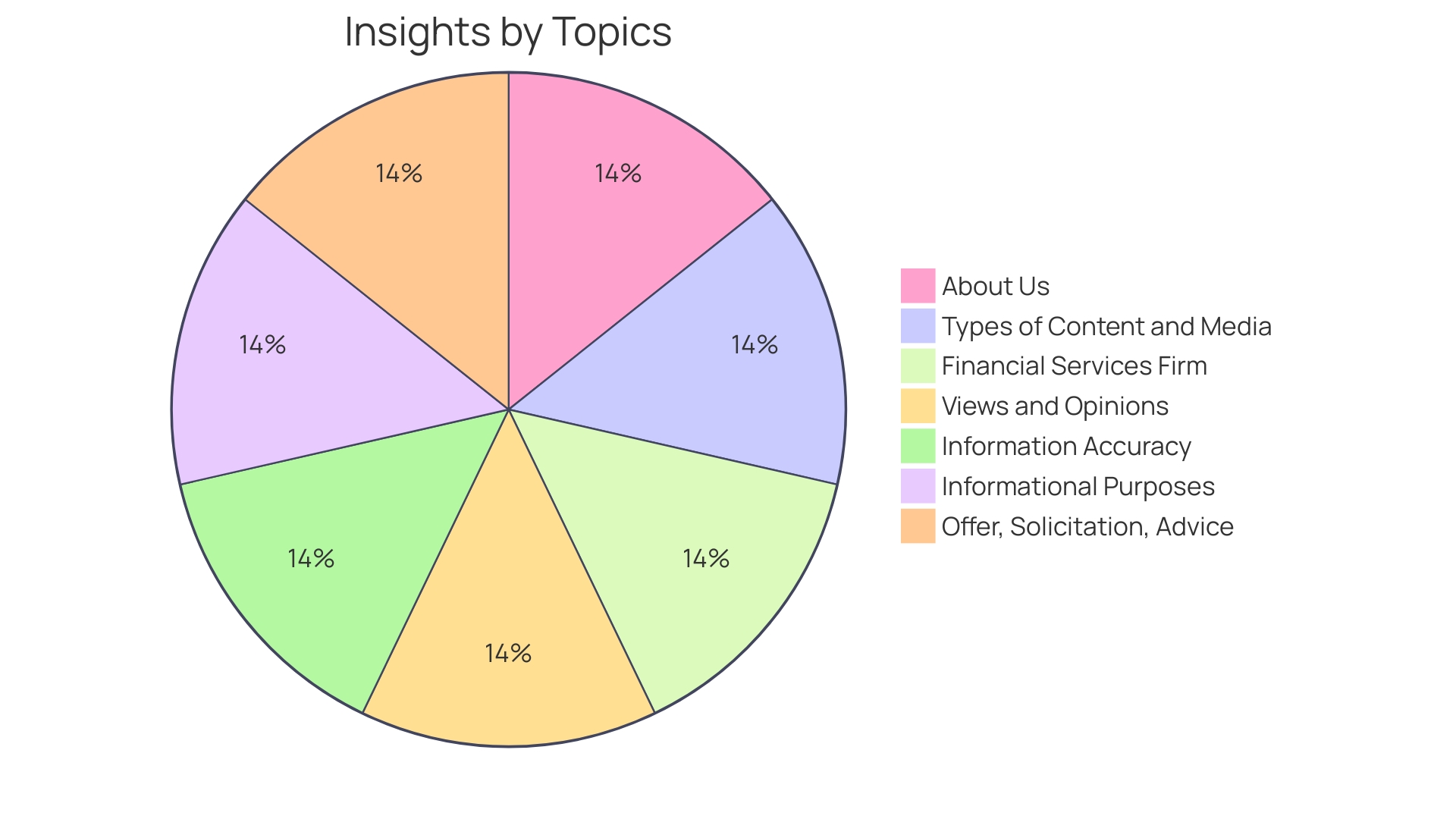Introduction
The concept of M-Commerce, also known as mobile commerce, has transformed the way we engage with the digital marketplace. This evolution of commerce leverages the pervasive nature of mobile technology, enabling consumers to enjoy a seamless shopping experience regardless of their location or the time of day. Innovative companies like Spotify have capitalized on the mobile-centric world by expanding their offerings to align with the shift towards mobile usage.
The mobile commerce landscape is also marked by the strategic use of data and analytics to enhance the user experience. E-commerce and M-Commerce are continually evolving, with startups and established companies alike exploring innovative ways to blend digital and physical shopping experiences. As mobile commerce continues to grow, it stands as a testament to the adaptability and innovation inherent in the digital economy, providing businesses and consumers alike with unparalleled convenience and a wealth of opportunities to engage in the global marketplace.
Definition of M-Commerce
The concept of M-Commerce, also known as mobile commerce, has transformed the way we engage with the digital marketplace. It's the use of mobile devices like smartphones and tablets to manage all the nuances of commercial transactions—from browsing and shopping to making payments and accessing services. This evolution of commerce leverages the pervasive nature of mobile technology, enabling consumers to enjoy a seamless shopping experience regardless of their location or the time of day.
Innovative companies like Spotify have capitalized on the mobile-centric world by expanding their offerings to align with the shift towards mobile usage. Spotify's foray into video podcasts exemplifies the potential of mobile platforms to deliver diverse content formats. As they integrate visual elements into their audio streaming services, they demonstrate the engagement power of M-Commerce and its ability to adapt to consumer preferences.
The mobile commerce landscape is also marked by the strategic use of data and analytics to enhance the user experience. For instance, Spotify's partnership with Mux to improve video podcast Quality of Experience (QoE) underscores the critical role of data-driven insights in refining mobile services. By harnessing such tools, businesses can ensure their mobile platforms are not only functional but also highly responsive to user needs.
E-commerce and M-Commerce are continually evolving, with startups and established companies alike exploring innovative ways to blend digital and physical shopping experiences. The 'phygital' approach, which gained momentum during the pandemic, is now an essential aspect of the commerce ecosystem. Retailers are recognizing the importance of meeting customers where they are—on their mobile devices, ready to engage with brands at their convenience.
Amazon India's Great Indian Festival sale is a testament to the power of mobile commerce during peak shopping seasons. By offering a mobile-friendly platform for customers to access deals and discounts, Amazon ensures that the modern shopper's need for convenience and immediacy is met.
The eCommerce sector encompasses a variety of industries, and its structure reveals the extensive reach of mobile commerce. From the sale of beverages to food and other consumer goods, the ability to purchase via mobile devices has revolutionized the way businesses connect with customers globally.
As mobile commerce continues to grow, it stands as a testament to the adaptability and innovation inherent in the digital economy, providing businesses and consumers alike with unparalleled convenience and a wealth of opportunities to engage in the global marketplace.
Difference Between E-Commerce and M-Commerce
E-Commerce and M-Commerce, while entwined in the digital realm, stand distinct in their operations. E-Commerce spans the gamut of online transactions through various electronic means, while M-Commerce hones in on mobile devices as its medium. The latter capitalizes on mobile-specific functionalities—such as geolocation services, immediate alerts through push notifications, and seamless mobile payment systems—to enhance the shopping experience for users on the move. These mobile-centric features not only cater to the convenience of consumers but also open avenues for personalized marketing and services.
Moreover, in the realm of E-Commerce, the integration of technologies like AI and machine learning, as seen with Zara's Just-In-Telligent supply chain system, underscores the innovation in managing extensive inventories and customer relations. This approach to incorporating cutting-edge tech is indicative of the broader trends across the E-Commerce ecosystem, where data-driven decision-making and customer-centric strategies are paramount.
The blending of physical and digital shopping experiences, as highlighted by Keith Kirkpatrick of The Futurum Group, demonstrates the evolving landscape of E-Commerce. This 'phygital' approach is becoming the norm, as consumers now expect seamless integration between their online browsing and in-store purchasing.
On the statistical front, the E-Commerce market is diverse and wide-reaching, encompassing everything from food and beverages to consumer electronics, with businesses both exclusively online and those combining brick-and-mortar with digital presence. The ubiquity of online shopping, internet banking, and electronic payments signifies the pervasiveness of E-Commerce across various consumer touchpoints and preferences.
Finally, as we observe the dynamism of E-Commerce through events like Amazon's Great Indian Festival, it's evident that online marketplaces are not only platforms for transactions but also vibrant hubs for deals and consumer excitement, further cementing the role of E-Commerce in the fabric of modern commerce.

Types of M-Commerce
M-Commerce, or mobile commerce, has evolved rapidly to encompass a variety of transactions and technology applications. It's not just about shopping on the go but includes an array of services streamlined for mobile users.
Firstly, mobile shopping has transformed the retail landscape. Users can browse and purchase items through dedicated apps or websites optimized for mobile devices. This convenience is reflected in the rise of companies like Spotify, which has expanded its services to include video podcasts, catering to the growing demand for mobile-friendly content.
Mobile banking, another key aspect of M-Commerce, enables customers to manage their finances with ease. Services like checking account balances, transferring funds, or making payments are all available at the touch of a button, mirroring Zara's integration of AI to optimize their business operations and enhance customer engagement.
Mobile payments have also seen significant growth, offering a seamless way to transact without physical cash or cards. Companies are focusing on creating personalized payment experiences to address the impersonality of online shopping, as noted by fintech developers.
Moreover, mobile ticketing allows consumers to buy and store tickets for various services directly on their devices. This convenience is part of a larger trend where consumers expect to access services instantly and on-demand, as emphasized by Keith Kirkpatrick of The Futurum Group.
Lastly, mobile advertising harnesses the unique capabilities of mobile devices, such as location-based targeting, to deliver more interactive and engaging content. This approach is crucial in a marketplace where e-commerce innovation is largely driven by startups aiming to meet changing consumer habits.
In summary, M-Commerce is a dynamic field that spans shopping, banking, payments, ticketing, and advertising, all designed to provide a frictionless mobile experience. Its growth is a testament to the increasing consumer preference for digital channels, with e-commerce sales reaching an astonishing $5.7 trillion globally. As M-Commerce continues to advance, it's clear that mobile technology will remain a cornerstone of commerce and customer interaction.
Benefits of M-Commerce
M-commerce, short for mobile commerce, revolutionizes the shopping experience by leveraging the ubiquity and versatility of mobile devices. It caters to the on-the-go lifestyle of consumers, delivering a blend of convenience and personalized service that physical stores can't match.
-
Convenience is paramount in m-commerce. With 24/7 access to online shopping platforms, consumers enjoy the freedom to make purchases or utilize services from any location, as long as they have their device with them. This round-the-clock accessibility caters to the modern consumer's desire for immediate gratification, as reflected in comments by Keith Kirkpatrick from The Futurum Group who pointed out consumers' expectations of instant availability and in-store pickup options.
-
Personalization takes center stage as m-commerce platforms harness data analytics to tailor recommendations and promotions to individual user preferences. This approach not only enhances customer satisfaction but also drives sales, as evidenced by Spotify's personalized content strategies that have significantly increased user engagement.
-
The user experience in m-commerce is augmented by the inherent features of mobile devices like touchscreens, GPS, and cameras. This interactive environment facilitates a more engaging shopping experience, as seen in the rise of video podcasts on platforms like Spotify, which enhance user engagement through multimedia content.
-
M-commerce also extends a business's reach, connecting with a broad audience across different demographics. For instance, during Amazon India's Great Indian Festival, the e-commerce platform capitalized on the festive season to attract a diverse customer base with enticing deals across various product categories.
-
Cost-efficiency is another compelling advantage of m-commerce, as it reduces the need for physical retail space and associated overhead costs. This allows businesses, especially startups, to innovate and operate more efficiently, as they navigate the evolving landscape of consumer needs and habits.
-
Lastly, integrating m-commerce can provide a competitive edge by offering unique and innovative solutions. This is crucial in a retail environment where differentiation is key to attracting and retaining customers.
In summary, m-commerce is not just a trend; it's a strategic necessity for businesses aiming to thrive in the digital era. Its advantages encompass a wide range of aspects, from cost savings to enhanced customer experiences, making it an indispensable component of modern commerce.

Challenges and Considerations in M-Commerce
M-Commerce, while brimming with potential, comes with its own set of hurdles that businesses must leap over to capture the full value of mobile-driven online commerce. A major challenge is the differentiation in mobile devices and operating systems, which complicates creating a uniform user experience across varying platforms. Mike's Bikes, a bike retailer with a mission to increase cycling, has tackled this by providing an omnichannel experience, ensuring customers have a seamless view of products both online and in physical stores, thus addressing device fragmentation.
Furthermore, ensuring the security and privacy of customer data, especially payment details, is paramount in M-Commerce. This is echoed by Bamboo's work with Filson, where they developed a forecasting model that considers customer lifetime value and acquisition cost, which indirectly necessitates robust data protection measures to maintain customer trust.
Designing user interfaces that are both intuitive and friendly for smaller screens is another consideration. MCoBeauty's focus on influencer marketing to support retail and online sales is a testament to innovative approaches in design and marketing that resonate well on mobile platforms.
Poor network coverage or slow internet speeds can also dampen the M-Commerce experience. As highlighted by Keith Kirkpatrick of The Futurum Group, the blending of physical and digital channels, known as 'phygital', requires brands to be omnipresent and responsive to customer expectations, which includes overcoming connectivity issues.
Lastly, the swift pace of technological advancements in mobile tech necessitates businesses to stay current and adapt quickly. With e-commerce sales skyrocketing to $5.7 trillion globally and the e-retail industry riding on the back of 2.64 billion online shoppers, the stakes for keeping up with tech trends have never been higher. As retail media evolves from a 'side-hustle' to the 'main event', staying ahead of the curve is not just advantageous – it's critical for survival in the dynamic landscape of M-Commerce.
Optimizing M-Commerce Experiences
Optimizing M-Commerce strategies is pivotal for businesses aiming to thrive in the digital marketplace. A key aspect of this optimization is the design and functionality of mobile apps and websites. They must be responsive to various screen sizes and resolutions to ensure a seamless user experience. Additionally, streamlining the checkout process is crucial. This means reducing the number of steps required to complete a purchase and offering a variety of payment methods to accommodate customer preferences.
Personalization plays a significant role in engaging customers. By analyzing user data and behavior, businesses can tailor recommendations and offers to meet individual needs, thereby enhancing the shopping experience. Performance optimization is another critical factor. It's important to focus on improving page load times and app responsiveness to keep users satisfied.
Furthermore, integrating M-Commerce with existing E-Commerce platforms allows for a uniform experience across all channels. This integration is vital as it ensures consistency, which can help in boosting customer confidence and loyalty.
To maintain competitiveness, continuous testing and iterative improvements are necessary. Analyzing user feedback and behavior allows businesses to pinpoint areas that need enhancement. For instance, Dunelm Group plc, a leading UK homewares retailer, significantly improved app performance by setting clear goals and continuously refining their strategies. Their approach demonstrates the importance of dedicating resources to enhance the user experience, resulting in meeting ambitious performance goals.
In the realm of E-Commerce, design is not just about aesthetics—it's about trust, perception, and the overall shopping experience. As expert Alan O'Sullivan aptly puts it, by optimizing conversion rates without increasing marketing budgets, businesses can achieve better ROI. This is echoed by the success stories of startups leading the way in E-Commerce innovation through personalized experiences augmented by AI.
In summary, a successful M-Commerce strategy requires a mobile-responsive design, a streamlined checkout process, personalization, performance optimization, seamless integration with E-Commerce, and a commitment to continuous testing and improvement. These elements, when effectively executed, can significantly enhance the consumer's shopping experience and drive business growth.

Future Trends and Insights in M-Commerce
The landscape of mobile commerce (M-commerce) is rapidly advancing, fueled by innovations and consumer demands. Contactless payments and mobile wallets are becoming the norm, offering users the ease of managing multiple bank accounts and conducting secure, rapid transactions. The anticipated growth in cross-border payments to over $100 trillion globally within a decade, as reported by the Bank of England Global Outlook, underscores the significance of these convenient payment solutions.
Voice-commerce is on the ascent, capitalizing on the widespread use of virtual assistants. This seamless integration allows for hands-free shopping, enhancing the overall user experience. Meanwhile, Augmented Reality (AR) and Virtual Reality (VR) technologies are revolutionizing the retail space by enabling consumers to preview products in a virtual setting, lending a new dimension to the shopping experience.
A mobile-first approach is gaining traction among businesses, as they now prioritize mobile platforms for customer engagement and transactions, acknowledging the shift in consumer behavior towards mobile usage. In parallel, the integration of AI and chatbots is poised to transform customer service. With an impressive projected CAGR of 34.1% and an estimated valuation of $55.53 billion by 2030 for the global retail AI market, these smart solutions will drive personalized interactions and data-driven decision-making.
The push for sustainability is evident, with consumers seeking eco-friendly products and retailers adopting sustainable practices. This trend is contributing to the growth of brands that value planetary health, fostering a loyal customer base. In the same vein, the revival of in-store experiences and omnichannel sales emphasizes the importance of a cohesive journey across all shopping platforms, ensuring consistent service and product availability.
These trends, backed by consumer surveys indicating a surge in the use of digital payments, with over 90% engagement, illustrate a clear trajectory towards a more interconnected, personalized, and efficient M-commerce ecosystem.

Conclusion
M-Commerce, or mobile commerce, has transformed the digital marketplace by leveraging mobile technology for a seamless shopping experience. It offers convenience and opportunities for businesses and consumers alike. Companies like Spotify have capitalized on the shift towards mobile usage, while the strategic use of data and analytics enhances the user experience.
The mobile commerce landscape continues to evolve, with startups and established companies exploring innovative ways to blend digital and physical shopping experiences. The "phygital" approach, meeting customers on their mobile devices, is essential for success. M-Commerce showcases the adaptability and innovation of the digital economy, providing unparalleled convenience and opportunities in the global marketplace.
M-Commerce focuses on mobile devices, offering various transactions such as shopping, banking, payments, ticketing, and advertising. It provides 24/7 accessibility, personalization, an interactive user experience, extended reach, cost-efficiency, and a competitive edge.
However, M-Commerce also presents challenges. Differentiation in mobile devices and operating systems complicates creating a uniform user experience. Data security and privacy are paramount concerns.
Designing intuitive interfaces for smaller screens and addressing connectivity issues are considerations. Staying current with technological advancements is crucial.
To optimize M-Commerce experiences, businesses must focus on mobile app and website design, streamline the checkout process, personalize recommendations, optimize performance, integrate with existing E-Commerce platforms, and continuously test and improve.
The future of M-Commerce includes contactless payments, voice-commerce, AR and VR technologies, a mobile-first approach, AI and chatbots, sustainability, and the revival of in-store experiences. These trends reflect the increasing demand for interconnected, personalized, and efficient M-Commerce solutions.
In conclusion, M-Commerce has revolutionized the digital marketplace, providing convenience and opportunities for businesses and consumers. By embracing mobile technology and optimizing the user experience, businesses can thrive in the dynamic landscape of M-Commerce.





